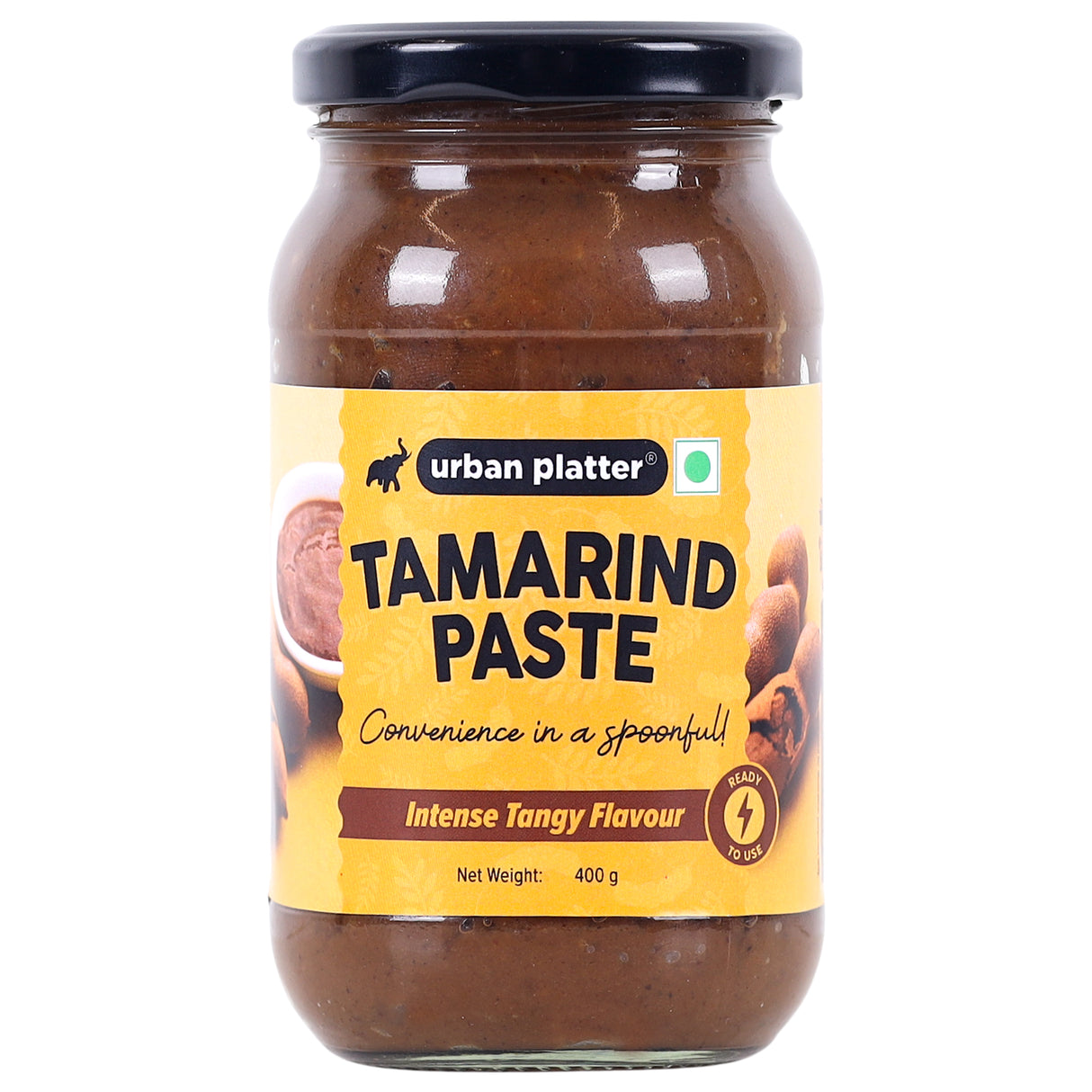Urban Platter Pure Concentrated Malabar Tamarind Paste, 400g (Ready to use Imli Paste, free from Seeds and Fiber, Perfect for Sambar and Chutneys)
Visit the Urban Platter Store.Urban Platter Pure Concentrated Malabar Tamarind Paste, 400g (Ready to use Imli Paste, free from Seeds and Fiber, Perfect for Sambar and Chutneys) is backordered and will ship as soon as it is back in stock.
Couldn't load pickup availability
Payment & Security
Secure payment methods
Your payment information is processed securely. We do not store credit card details nor have access to your credit card information.
Cash on Delivery charges: ₹200 (below ₹500) | ₹100 (above ₹500)
Shipping Policy: Free shipping over ₹500 cart value. A flat charge of ₹100 otherwise.
Returns & Cancellations: We do not accept returns due to hygiene and food-safety concerns. In case Order once placed cannot be cancelled. We levy a 100% cancellation charge should you chose to cancel your order anyway.
Urban Platter Pure Malabar Tamarind paste is just the fruit (separated from the pod and seeds) of the tamarind tree made into a ready-to-use cooking paste.Tamarind is a sticky, sour-tasting fruit that grows in large brown pods on the tamarind tree, a common fruit tree that grows all over Asia. The fruit is removed from the pods and must be separated from the seeds in order to use it. The taste of tamarind fruit is very sour, so whatever recipe youre making will need sugar or some kind of sweetener. The texture of tamarind is very sticky and paste-like, and the colour of tamarind fruit is dark brown. In Thai cooking, tamarind is used for a variety of dishes, tamarind is also a common ingredient in Indian and Mexican cuisines.
How to Cook with Tamarind Paste.
Tamarind paste is easy to use with the right recipe. Just scoop it out of the bottle and add straight to your recipe. Tamarind paste is usually cooked in with other ingredients, but can also be mixed into uncooked dips and chutneys. The thickness and strength of tamarind paste vary widely depending on which brand you use. If its a runny paste, you will need to add more in order to achieve the right flavour. Taste-test your recipe to achieve the right sweet-sour balance, adding more paste or more sweetener until youre happy with it. Culinary Uses- Having tamarind pulp handy can help quickly prepare tasty Indian dishes like chutneys, curries, dals and many south Indian delicacies like sambhar and rasam.
- The pulp can also be used to impart tartness to certain pickles, especially those made with bland ingredients like greens or bitter ingredients like bitter gourd.
- Tamarind pulp can also be diluted with warm water to acquire tamarind water, used to prepare appetising drinks.
- Tamarind pulp combined with jaggery and cumin seeds results in a tasty chutney that goes well with snacks like samosas and pakodas.
- Tamarind pulp is also used in the preparation of many Thai dishes.
- Tamarind is a rich source of vitamins, fibre, potassium, magnesium and other nutrients necessary for good health..
- It is also rich in thiamin, vitamin A, folic acid, riboflavin and niacin.
- Much of these vitamins plays antioxidant as well as co-factor functions for enzyme metabolism inside the body.
- It is beneficial for treating fevers and common cold.
- Gargling tamarind water is helpful in sore throat.
- Tamarind lowers cholesterol and promotes a healthy heart.
- Tamarind pulp is a useful remedy for vomiting, flatulence, constipation and indigestion.
- Tamarind pulp can also help improve appetite.
Urban Platters Tamarind Paste comes in a Glass bottle & one bottle is likely all you will need for a very long time, as the paste is quite strong and condensed. Urban Platter - Simply Good Food! :)
*Please refer our Shipping Policy for more details




